[Chapter 5] Section 1 ②
2. Wearing full harness type fall arrest equipment
-
Wear in accordance with the instruction manual.
If a harness with horizontal thigh straps is worn loose, without adequate tightening, this will increase the fall distance and the probability of damaging the groin.
Also securely tighten when the thigh straps are a V-shaped harness.
If the D-ring is positioned below the scapula (shoulder blade), the impact load of a fall may hit the abdomen directly, which is very dangerous. In particular, if the harness and body belt are integrated, there is a possibility of causing serious abdominal damage.
- Inspect work clothes and how they are worn.
[How to wear]
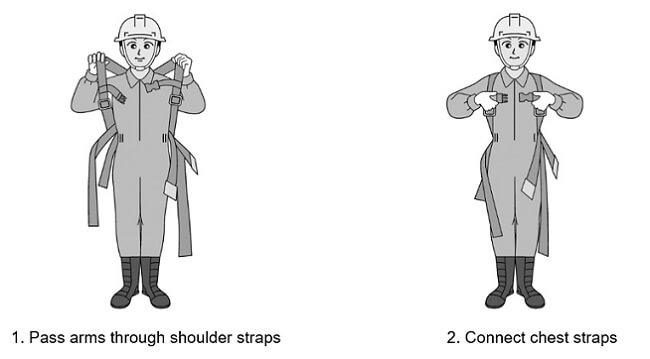
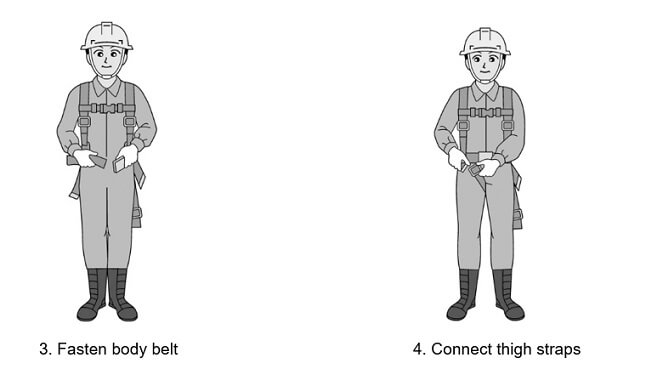
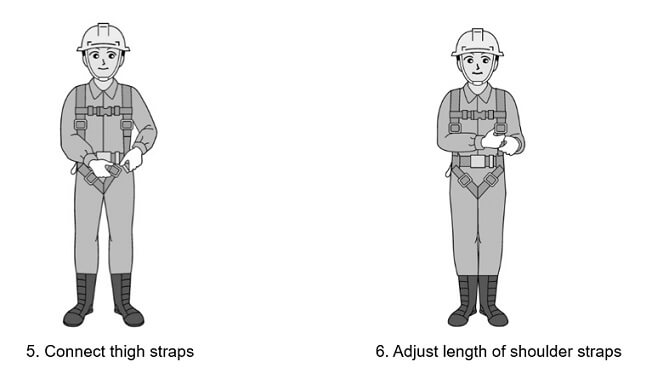
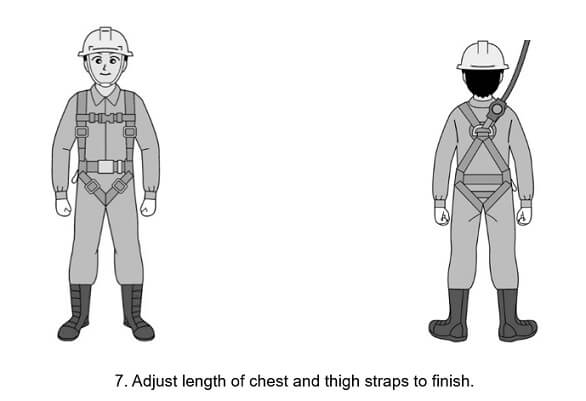
[Practical skills]
Pair off, face each other, and perform “pointing and calling” for each other.
It’s important to have another person look at the situation objectively.
Full harness type fall arrest equipment takes time to wear because each harness (belt/strap) must be adjusted with fittings, etc.
If body shapes are different, adjustment must be done each time, so it undesirable to share the same full harness type fall arrest equipment among multiple people.
(1) Wearing helmet straight: OK
(2) Looseness of helmet chin strap: OK
(3) Upper body clothing tucked in: OK
(4) Cuffs buttoned: OK
(5) Wearing protective gloves: OK
(6) Trouser hems tucked in: OK
(7) Full harness chest strap fastening: OK
(8) Full harness body belt fastening: OK
(9) Full harness thigh strap fastening: OK
(10) D-ring positioned above scapula (shoulder blade): OK
(11) Hook movement: OK
(12) Connection between lanyard and D-ring: OK
(13) Lanyard routing: OK
(14) Looseness of safety shoe laces: OK
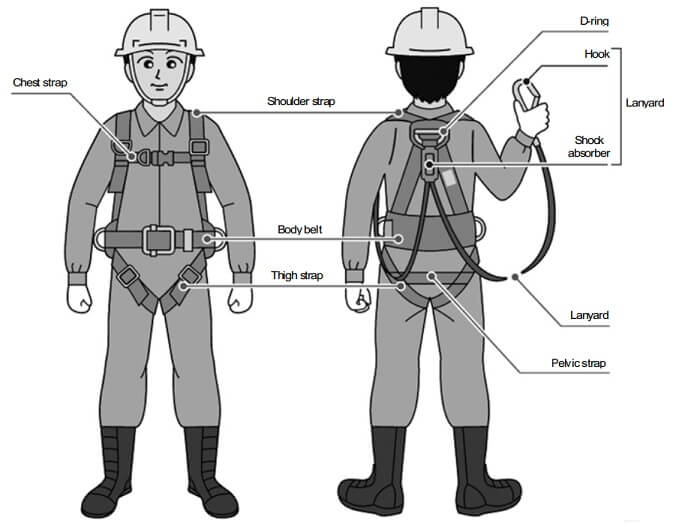
受講者様のご希望に合わせ、以下のタイプの講習会もご用意しています


このページをシェアする
講習会をお探しですか?